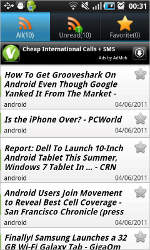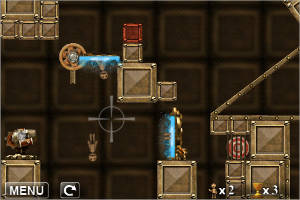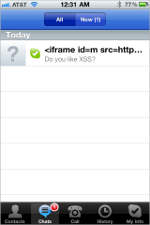Newspapers are part of our lives and some of us simply can’t live without them. However, finding time in the morning to read them is becoming increasingly difficult. And there are many who realise that and are creating applications that can delivered on mobile phones, and tablets so that one can read while on the move.
World Newspapers is one such application which gives you access to more than 6,000 newspapers, magazines, and websites.
A good part of it is that it renders local Indian languages even on Android 2.2 which does not have native support for these languages. You also get a good selection of Indian language as well as English newspapers and websites including Aajtak, Times of India, Amar Ujala, BBC Hindi, Business line, ET, HT, Malyalam Manorma etc.
The user interface is very simple and allows easy sharing of the stories through social networking sites. You can set RSS feeds, add favourites and store some pages for offline reading. If you do not understand a language properly you can translate it into a language of your choice. What is good is that all this happens in few clicks and is very easy.
User Interface
 Since the application is free and there are no subscription charges for the newspapers, you have to tolerate a lot of ads, but that either comes at the bottom of the page or the top. You will also get a lot of video ads which east up a lot of time if you are on a slow speed.
Since the application is free and there are no subscription charges for the newspapers, you have to tolerate a lot of ads, but that either comes at the bottom of the page or the top. You will also get a lot of video ads which east up a lot of time if you are on a slow speed.
It would have been better if there was a paid version of the World Newspapers App as so many people who have used the app have expressed the desire to get paid app without advertisements.
We did this review on Dell XCD 35 and the pages rendered flawlessly even on the slow 2G connection and the readability was maintained for all the languages.
The newspapers and magazines have also been segmented into different categories like automotive, sports, business etc, which will help you in selecting stories of your interest.
Verdict
A must have app for people who like to be updated, the application is fairly well laid out with a lot of to choose from. It has content from 105 countries and 6,000 publications. The language support is very good and so you won’t find web pages with boxes, they all render the way they should. Only thing that you need is a data connection either through 2G, 3G mobile network or WiFi.


 One can also search for a friend via user name which they commonly use or must have shared. For those who do not wish to play with strangers also have the option to choose the opponents from the contact list, which will require the app to access your contact list to scout for your friend who is needed to be registered for the game else you can send him an invite.
One can also search for a friend via user name which they commonly use or must have shared. For those who do not wish to play with strangers also have the option to choose the opponents from the contact list, which will require the app to access your contact list to scout for your friend who is needed to be registered for the game else you can send him an invite.  Four or five letter word offers more strikes whereas the eight letter word gives out less strikes. To help solve the word, the game offers three different ‘lifelines’ out of which only one can be used for at a time. One of the three lifelines eliminates four wrong tiles out of all 26 letters available. Once the opponent has finished his move, the sender of the word gets to replay and watch whether the opponent was successful or not. Second one highlights one of the four letters in the word and the last one simply allows removing one strike for false selection of letter.
Four or five letter word offers more strikes whereas the eight letter word gives out less strikes. To help solve the word, the game offers three different ‘lifelines’ out of which only one can be used for at a time. One of the three lifelines eliminates four wrong tiles out of all 26 letters available. Once the opponent has finished his move, the sender of the word gets to replay and watch whether the opponent was successful or not. Second one highlights one of the four letters in the word and the last one simply allows removing one strike for false selection of letter. 


